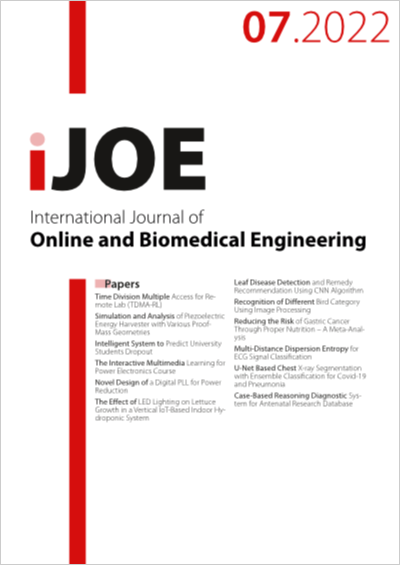The Interactive Multimedia Learning for Power Electronics Course
DOI:
https://doi.org/10.3991/ijoe.v18i07.30029Keywords:
Power electronics, interactive multimedia, e-learningAbstract
The main problem in learning power electronics course is that there are many things that require imagination to understand the principles of power converters. Thereto, learning that occurs is not flexible, which only occurs in the classroom, even though students need a lot of time to understand the material and need media that is able to visualize through illustrations, text, pictures, audio. This paper proposes the development media in the form of Power Electronics Learning Interactive Multimedia Courses which were developed using the help of the Adobe Flash application, so it is hoped that with this media students can learn the material of DC-DC converters and AC-AC converters easily, and can learn flexibly. Therefore, this study aims to develop a learning media that can overcome these problems, in the form of Interactive Multimedia Learning for Power Electronics Courses, which was developed using the help of Adobe Flash applications. The research method used refers to the Instructional Development Institute (IDI) model. The results of this study indicate that the Interactive Multimedia Learning for Power Electronics Course can be successfully used in learning. Meanwhile, the novelty of these findings makes a different contribution from previous interactive multimedia learning, because through media development you can learn with multimedia elements that describe DC-DC converters and AC-AC converters online so that learning becomes more flexible.
Downloads
Published
How to Cite
Issue
Section
License
Copyright (c) 2022 Krismadinata Krismadinata, Ulfa Isni Kurnia, Rudi Mulya, Unung Verawardina

This work is licensed under a Creative Commons Attribution 4.0 International License.



